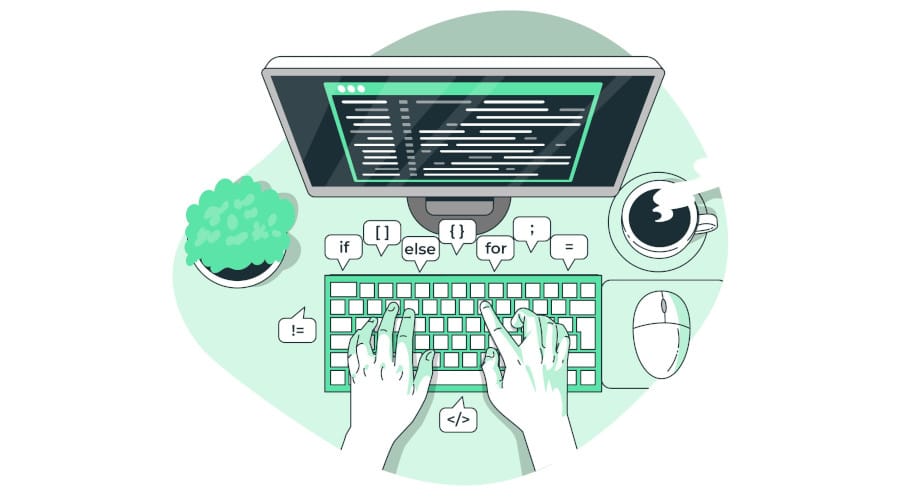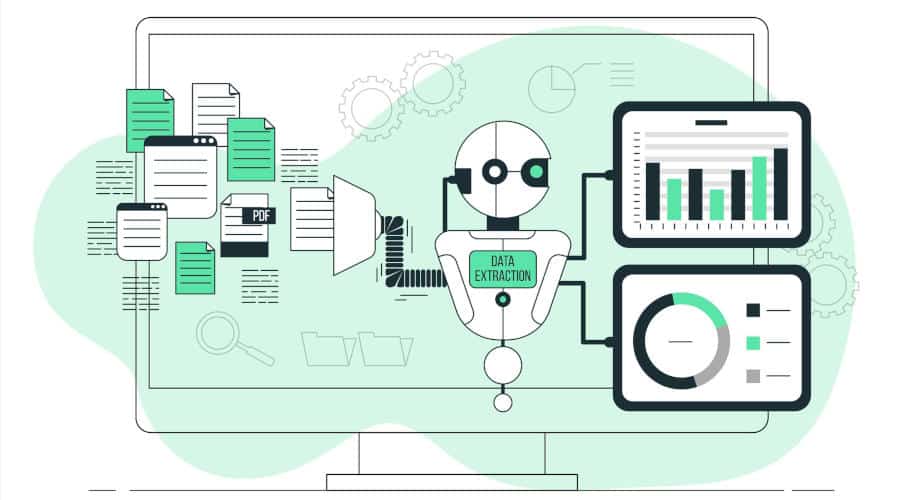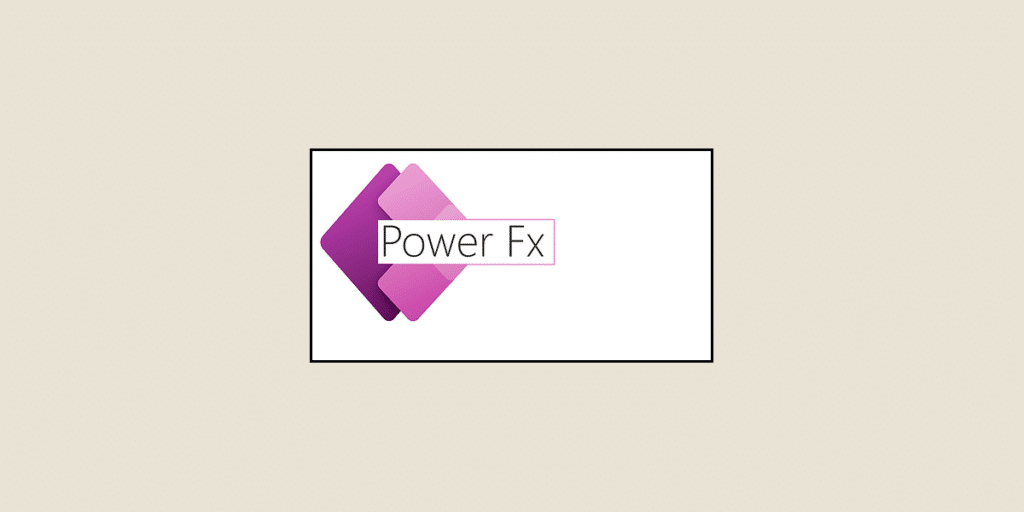Power FX is the formula language of Power Apps, Microsoft's no-code development platform. Find out everything you need to know about this tool, and how to master it!
For professionals in all sectors, the ability to automate tasks, customize applications and create efficient workflows has become an indispensable skill.
To meet this new imperative, Microsoft has created a powerful, versatile formula language designed for use in its tools such as Power Apps and Power Automate: Power FX.
What is Power FX?
In 2018, with the no-code development platform Power Apps, Microsoft introduced the Power FX language.
The main objective was to provide a powerful yet consistent language to simplify the creation of expressions and rules, while offering a familiar experience to users accustomed to other tools such as Excel.
Designed to be simple to learn and use, Power FX is accessible even to those with no coding knowledge. Its syntax is intuitive and minimalist.
Using it, it becomes possible to create customized applications without having to delve into complex programming languages.
So this tool is equally suited to IT professionals, developers, or simply professionals looking to improve their productivity.

Benefits and strengths
The main advantage of Power FX is undoubtedly its ease of learning.
It’s a language that’s both accessible to beginners and powerful for technical users, and while it’s simple to use for routine, basic tasks, it also offers advanced features for more complex projects.
Integration with Power Apps and Power Automate also makes it ideal for creating applications and automating workflows.
It’s also a versatile tool, capable of handling a wide variety of data types and operations. This makes it a suitable choice for many different applications.
Although Microsoft Excel uses formulas to perform calculations, they are often limited to spreadsheet operations.
Power FX, on the other hand, goes a step further, enabling data manipulation, process automation and personalized user experiences.
What’s more, its more consistent and predictable syntax makes it much easier to master.
It’s an attractive choice for those who want to quickly create solutions without becoming programming experts.
Understanding the fundamentals of Power FX
To start using Power FX, you need to understand the basic concepts. The language supports common mathematical operations such as addition (+), subtraction (-), multiplication (*), division (/) and logical operations such as AND (&&) and OR (||).
It also offers a wide range of built-in functions to perform specific operations. For example, the Text function converts a number into text and the Today() function returns the current date.
These functions are essential for creating powerful expressions in Power FX. Microsoft documentation provides a complete list with examples of their use.
Values can be numbers, text, dates, times or Booleans. For example, “Hello” is a text value and 42 is a numeric value.
A wide variety of data types are supported, making Power FX versatile for different applications. These include text, numbers, dates and times, and arrays for storing collections of values.

Creating expressions in Power Apps
One of the main uses of Power FX in Power Apps is to customize the user interface. Expressions can be used to control the visibility of elements, set default values, perform real-time calculations and much more.
In particular, they are used to validate data entered into a form by the user, for example to check whether an email field is in the correct format.
Another use case is to make elements visible or invisible depending on certain conditions. This makes it possible to create dynamic interfaces that adapt according to context.
In addition, real-time calculations can be performed to automatically update values, such as the total of an invoice, according to the data entered.
Expressions can also be used to define navigation actions, such as redirecting the user to another page within the application based on his or her choices.
So there you have it: users have unlimited flexibility when it comes to personalizing their applications.
Workflow automation with Power Automate
Another Power Platform flagship tool is Power Apps: a process automation platform enabling users to create automated workflows to simplify repetitive tasks.
Here, Power FX enables the creation of rules and actions dictating workflow behavior. In particular, conditions based on specific events can be defined to trigger a workflow, such as the receipt of an email in the inbox.
Once a workflow has been triggered, Power FX can be used to define actions to be taken in response to this event. This may include sending an automatic email, creating a task in a project management tool, or updating a database.
Power Automate can also be used to connect different applications and services. With this in mind, Power FX is used to map and transform data between these systems for seamless integration.

Why use Power FX for Data Science?
Although not directly designed for Data Science, Power FX can be useful for data analysis. It is a particularly interesting tool for Data Scientists working with the Microsoft ecosystem.
It can be used to extract, transform and load (ETL) data from various sources into Power Apps, or into Power Automate workflows.
Power FX expressions allow data to be cleaned, filtered and prepared before being analyzed in other Data Science tools such as Power BI, Excel or programming languages like Python or R.
With Power Automate, you can also automate tasks such as sending reports, updating databases, or alerting when specific conditions are triggered using Power FX.
This language can also be used to customize Power Apps user interfaces for data visualization. It also integrates with Microsoft software such as Power BI and Azure, widely used in Data Science.
However, for more advanced analysis, data modeling or Machine Learning, other programming languages such as Python, R or SQL will be more appropriate…
Conclusion: Power FX, the formula language to master in the age of No Code
Over the coming years, No Code development will continue to gain ground in the enterprise. Generative artificial intelligence technologies will make it ever easier to create applications, using only natural language prompts.
As a result, tools such as Power Apps will become essential for both developers and professionals needing customized applications to complete their tasks or automate them.
In this context, mastery of Power FX will become a valuable skill highly sought after by employers. To acquire it, choose DataScientest!
Our Data Analyst training course will teach you how to handle Power BI and Power Platform, including Power Apps and Power Automate. At the end of the course, you’ll be able to take the Microsoft PL-900 exam to receive Power Platform Fundamentals certification!
The program also covers the Python language, databases, DataViz, data analysis techniques and Machine Learning. You’ll receive a certificate from Mines ParisTech PSL Executive Education and a state-recognized “Project Manager in Artificial Intelligence” diploma.
As an alternative, we also offer a Power BI training course that teaches you how to use the business intelligence tool in just 5 days.
All our training courses can be completed via the web, on a full-time or part-time basis. Our organization is eligible for funding options. Discover DataScientest now!

Now you know all about Power FX. For more information on the same subject, take a look at our articles on Power BI:










